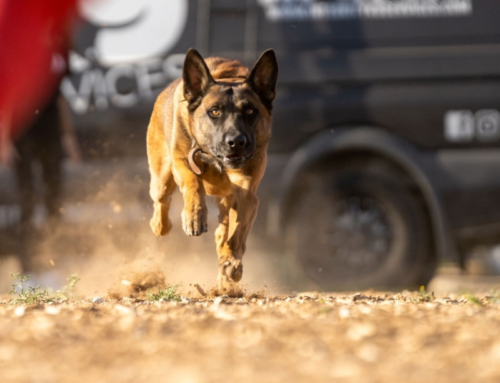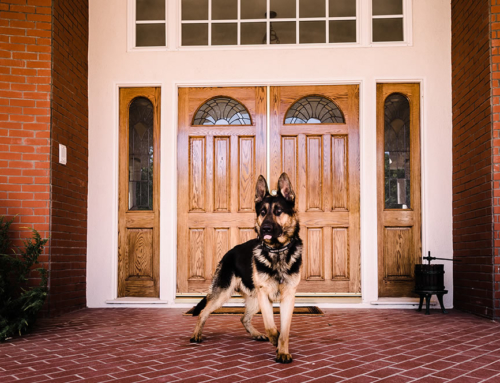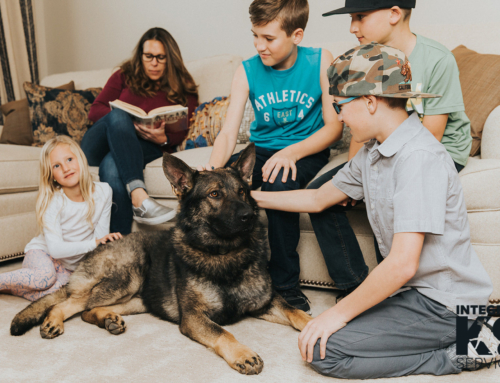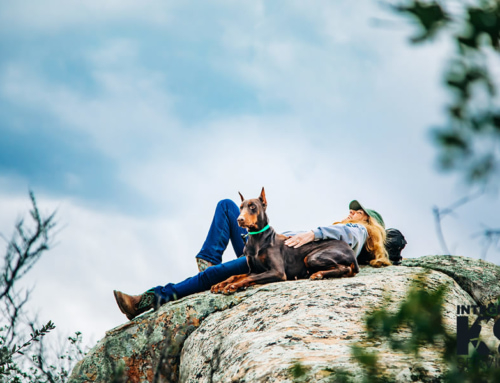Running Protection and Running Self-Defense
Want to start running with your dog?
Whether you want to start running with your dog for your own protection and self defense, to get your dog some exercise, to enjoy bonding time with your dog, or all of the above, here are a few things you need to know before hitting the trails or the road.
Pre-run checklist – running with your dog
- Check the health of your dog by getting them a vet checkup
- Wait until they are at least 8 months old to start running
- Master walking and leash skills first before running
Before you start running with your dog, it is imperative that you make sure your dog is in good health. If you are unsure if your dog is ready to start running, take him into the vet for a checkup. Your vet can give you the green light or tips on how to get ready if things need to be done to get your dog in running shape. If you have a puppy, wait until he is fully grown (anywhere between 8-18 months) to run with him because running too hard too early can interfere with his bone and joint development and cause problems later in life. Your vet can let you know when it’s developmentally appropriate for your dog to run with you. Lastly, make sure your dog is good at walking on leash with you before you move to running—if your dog pulls when you walk, don’t start running until you’ve mastered this skill.
Running with your dog – the basics
- Warm up your dog with a short walk
- Do not run shortly after your dog has eaten or drank
- Use a handheld leash
- Master short stretches before going for distance
Before you start running, warm up by walking your dog (and walk to cool him down after your run). Avoid running right after your dog has eaten or drank water to prevent “dog bloat.” Walking your dog after eating or drinking can help your dog begin to digest their food so you can go on a run. Use a handheld leash when you first start going on runs so you have control over your dog. If a dog is not used to trail running or running on a busy road, he can get spooked and having a handheld leash can help you guide your dog around any possible danger or distraction. Master running with few distractions before you hit a busy trail or park.
Running with your dog – intermediate skills
- Teach your dog to stay on one side only while you run
- Teach your dog commands to speed up or slow down
- Build your dog’s stamina as you go
Make sure your dog stays on one side of you when running because the leash can trip you if your dog switches sides or runs in front of you. Teaching your dog commands for running can help prevent this. Give your dog a command when you want to start/stop running or speed up/slow down. Changing speeds and starting and stopping is a great way to practice running commands. Work up to long runs to help your dog build up endurance and stamina. Just like you can’t go from never running to running a marathon in a day, or even a week, your dog needs time to train too!
Running with your dog – advanced skills
- Master the recall command with your dog for off-leash running
- Invest in the right gear for the run
If you have a goal of being able to run with your dog off-leash, make sure your dog has mastered the recall command! This is vital for off-leash running. Practice the recall command and then off-leash running in an area that is fenced in or is not densely populated so there are less distractions. Once your dog has mastered that, start practicing in more populated areas that have more distractions until your dog is ready for any trail or park. Make sure you know the leash laws for where you are before letting your dog off leash. Make sure your dog has earned your trust before letting them off leash. This will keep them more safe especially during trail runs or on busy streets. Invest in the right gear for your dog if you plan on running in snow, on rocks, hilly trails or hiking paths.
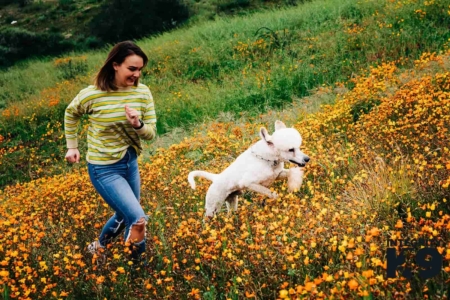
- Monitor your dog during and after your runs
- Take breaks as needed
- Check the surface before you run
Monitor your dog’s breathing, mood, panting and salivation while you run and afterwards. Take it slow or add breaks as needed (make sure your dog is not panting excessively) and give your dog a chance to drink some water and cool down. Don’t run on hot pavement because it can burn your dog’s paws. You can buy dog shoes to protect your dog’s paws from hot pavement and rugged terrain. Additionally, look for spiked weeds that can get caught in your dog’s fur. If they are not removed, they can eventually cut into your dog’s skin.
Your dog cannot run in hot or cold weather for as long as you can! Know the signs of heat stroke when running in hot weather.
– Salivating and/or panting excessively
– Obvious discomfort
– Vomiting and diarrhea
– Disorientation
– Seizures
On the flip side, if you live in a place where it gets super cold, check for ice or snowballs on your dog’s paws when running in snowy or icy weather. Snowballs/ice can make your dog limp if they get into his paws. Boots can also help with this.
When trail running, train your dog to wait on your command to go over logs because snakes can hide by fallen trees. Lastly, have rest days for your dog just like you would for you after hard workouts.
How to train your dog to run with you
Worried about how your dog will do on your first run? Don’t worry! It’s usually very easy to introduce running to your dog, as long as you do it right. Start adding small stretches of running time into your regular walks. This way your dog knows that running is not an excuse to misbehave or run as fast as they can. Gradually add more running time into your routine walks and your dog should slowly get the hang of running with you. If your dog has not been running much, make sure to start slow and gradually increase the overall run time. Add no more than 10 minutes of running on the first walk, and gradually increase run time by a minute every other walk.
Benefits of running with your dog:
Running with your dog is a great way to bond with him or her! Your dog loves to spend time with you and so running together is a great way to do that while getting exercise. Getting plenty of exercise will keep both of you healthy as well. It is also a great form of self defense. Your dog can alert you of danger while on the trails or the road. Having your dog run with you can cause others to leave you alone. He or she can also alert you of any animals that you may come across while trail running. Running with your dog is a win-win all the way around!
It’s terrible that we live in a world where a person cannot run by his or herself and feel safe. Despite this, we still need to be prepared for any possible situation and bringing your dog on your run makes you less of a target to those who wish to do you harm. We sincerely wish this was not a problem the world faces but we want to help those who love running or hiking to be able to continue their sport.
Now, what items do you need to run with your dog?
- Doggie bags for any waste your dog leaves behind.
- Water for you and your dog
- Short Leash – Having a short leash can give you both room to run but not enough for your dog to wander. Do not use retractable leashes when running.
- Treats for positive reinforcement when starting out.
If you have any more questions about running with your dog, please give us a call at 855-461-3647 or checkout our available dogs page!



